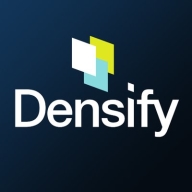

Opvizor and Densify compete in the virtualization and cloud management space. Densify is considered superior due to its comprehensive feature set, justifying its higher cost compared to Opvizor.
Features: Opvizor includes performance monitoring, capacity management, and predictive analytics. Densify provides advanced optimization for cloud and hybrid infrastructures, in-depth insights, and automation tools.
Ease of Deployment and Customer Service: Opvizor has a quick deployment process with strong customer service. Densify offers a more complex deployment model and a dedicated service team for setup support.
Pricing and ROI: Opvizor offers a cost-effective setup with a high ROI due to efficient resource management. Densify is more expensive but justified by its capabilities in cloud cost optimization, leading to long-term savings and improved ROI.


Densify is a hybrid cloud and container resource management platform that makes workloads self-aware of their precise resource requirements and automates the resource management and selection process. This solution helps you control your cloud spend and also helps your apps perform and scale better. Densify enables you to match your cloud requirements with the optimal cloud supply. Additionally, Densify is the only technology that leverages patented, predictive machine learning-powered analytics to perform advanced modeling of workload patterns, and provide precise optimization directives. It is ideal for cloud engineers, container platform owners, and IT finance.
Densify works by:
Densify Features
Densify has many valuable key features. Some of the most useful ones include:
Densify Benefits
There are many benefits to implementing Densify. Some of the biggest advantages the solution offers include:
We monitor all Virtualization Management Tools reviews to prevent fraudulent reviews and keep review quality high. We do not post reviews by company employees or direct competitors. We validate each review for authenticity via cross-reference with LinkedIn, and personal follow-up with the reviewer when necessary.